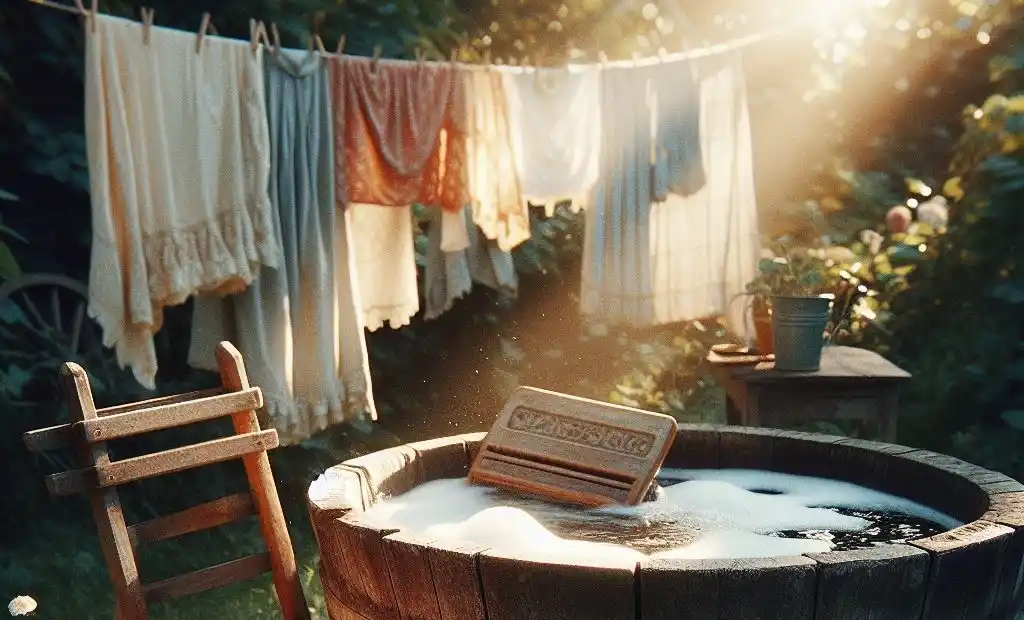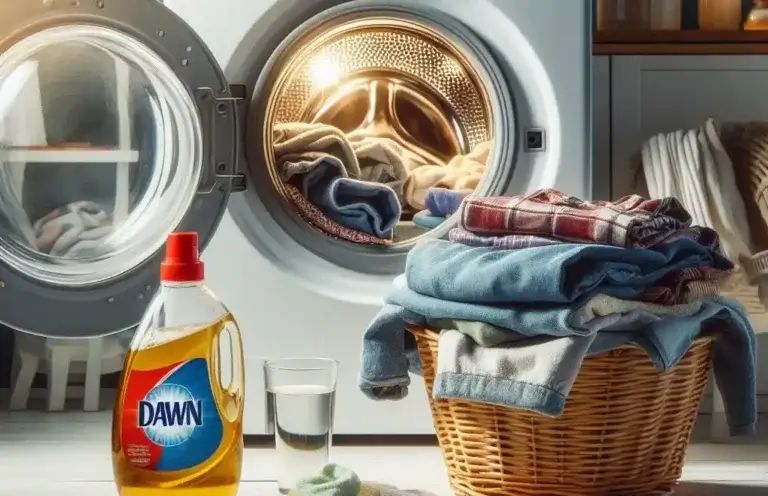Can I Wash Socks With Clothes? The Ultimate Guide to Washing Your Socks Properly
Do you ever wonder if you can wash your socks together with the rest of your laundry? It’s a common question many people have when doing laundry.
Properly washing your socks is important to help them last as long as possible. Washing socks incorrectly can lead to damage, wear and tear, and even the growth of bacteria inside them.
In this comprehensive guide, we’ll cover everything you need to know about washing socks, including:
- Should You Wash Socks Separately from Other Clothes?
- What is the Best Way to Wash Socks?
- Washing Machine vs. Hand Washing Socks
- How to Wash White Socks
- How to Wash Wool, Cotton, and Other Sock Fabrics
- Cleaning Smelly, Sweaty Socks
- Extending the Lifespan of Your Socks
- FAQs on Washing Socks
Plus plenty of expert tips and tricks for keeping your socks fresh, clean, and lasting for years to come!
Table of Contents
Should You Wash Socks Separately from Other Clothes?
One of the most common questions about washing socks is whether you should wash them separately from the rest of your laundry.
The short answer is yes – you should wash socks separately whenever possible.
Washing socks separately helps protect them from getting damaged, preserves their shape and elasticity longer, and prevents lint from getting trapped inside.
Here’s why it’s best practice to wash socks separately:
- Prevents damage from heavier items – Socks are lightweight and can easily get tugged on or stretched out when washed with heavier clothing items. Washing them separately prevents damage.
- Keeps their shape – The constant motion of a washing machine can distort a sock’s original shape over time. Washing them separately allows them to retain their fit.
- Prevents lint buildup – Socks easily trap lint when washed with towels, blankets, etc. This lint gets lodged inside the sock and is difficult to remove.
- Allows customized wash cycles – You can customize the wash cycle when socks are separated to be extra gentle on them. Using cooler water, delicate cycles, and mild detergent helps them last.
- Limits color transfer – Dark socks washed together with white socks can lead to grayish tinges. Separating them prevents this color transfer.
Washing socks separately takes a bit more time and effort, but is well worth it to extend the lifespan of your socks and ensure they stay looking and fitting their best.
If you simply don’t have time to separate your socks every time, consider getting a mesh laundry bag. Throwing your socks inside this bag provides some protection when washing with regular clothes.
Can I Wash Socks With Clothes

Yes, you can wash socks with clothes, but there are some factors to consider to ensure the best results for both your socks and your other garments.
Here’s a breakdown of key considerations and tips:
Fabric Compatibility:
- Similar Fabrics: Socks often blend well with casual clothes like t-shirts and sweatpants that share similar fabrics and care instructions.
- Delicates: Avoid washing socks with delicate items like silk or lace, as the agitation could damage them.
- Lint-Prone Fabrics: Separate socks from lint-attracting fabrics like towels and fleece to prevent pilling.
Water Temperature:
- Cold Water Harmony: Socks and many clothes thrive in cold water, making them compatible laundry mates.
- Hot Water Caution: If your clothes require hot water, wash socks separately to avoid potential shrinkage or color fading.
Colorfastness:
- New Socks: Wash new, brightly colored socks separately the first time to check for color bleeding.
- Color Grouping: To be extra cautious, wash socks with similarly colored clothes.
Lint Control:
- Turn Socks Inside Out: This helps reduce lint buildup on the outside of socks, keeping them looking cleaner.
- Mesh Laundry Bags: Consider using mesh bags for socks to contain lint and prevent them from getting lost in the machine.
Additional Tips:
- Gentle Cycle: Opt for a gentle cycle to protect both socks and delicate clothes from excessive wear.
- Mild Detergent: Use a mild detergent to prevent irritation and preserve fabric integrity.
- Air Drying: Air drying can extend the lifespan of both socks and clothes compared to machine drying.
Ultimately, the best approach depends on your specific laundry needs and preferences. Experiment with different methods to find what works best for you and your wardrobe.
What is the Best Way to Wash Socks?

Once you’ve decided to wash your socks separately, what is the best method for actually washing them? Follow these tips for clean, fresh socks:
1. Check Labels for Any Special Instructions
Before washing, check the care label on your socks for specific instructions. While most socks can be machine-washed, some may have special requirements.
For example, wool, cashmere or other delicate socks may need hand washing. Make sure to follow any guidelines on the label.
2. Pretreat Any Stains
If your socks have any visible stains, pretreat them before washing. Applying a stain remover stick or spray helps lift stains like grass, mud or food before the wash cycle.
Giving extra attention to stains helps socks look cleaner and newer for longer.
3. Wash with Cold Water
Always opt for the coldest water temperature allowed when washing socks. Hot water can damage elasticity and cause socks to stretch out faster.
Stick to cold washes even when doing an extra hot load to sanitize laundry. The heat from hot dryers kills bacteria just as effectively.
4. Use a Mild or Gentle Detergent
Harsh laundry detergents can wear down sock fabrics faster. When possible, choose a mild, gentle detergent formulation instead of regular options.
Specialty sock detergents are also available that clean effectively while remaining gentle on delicate fabrics like wool.
5. Choose the Delicates or Gentle Cycle
Set your washing machine to the most delicate, gentle cycle offered. This slower agitation is less harsh on socks and prevents damage.
If your machine doesn’t have specific cycles labeled “delicates”, look for settings like “gentle” or “handwash”.
6. Lay Flat or Hang to Dry
Avoid putting socks in the dryer not only to preserve elasticity but also to prevent shrinkage issues.
Letting socks air dry on a drying rack or hanging over a railing helps them maintain their original size and shape. Make sure they are thoroughly dry before wearing or storing them.
Washing Machine vs. Hand Washing Socks
While the washing machine offers convenience, is it the best way to clean your socks?
Let’s compare machine-washing socks versus hand-washing.
Machine washing benefits:
- More convenient, less time-consuming
- Agitation helps remove stains and odors
- Sanitizes via hot water and detergents
However, there are some downsides to relying solely on the washing machine:
- Can be too harsh on delicate fabrics like wool
- Spin cycles and tossing distort the original sock shape
- Lint and chemicals build up inside socks over time
Hand-washing socks have advantages too:
- Extra gentle cleaning for delicate fabrics
- Preserves shape and elasticity better
- Lint is easier to remove from wet socks
- Longer lifespan since no machine wear and tear
The process takes more time and elbow grease. But for expensive socks or those you want to make last, it can be worth it.
The best approach is to machine wash cotton, polyester, and nylon sock fabrics. Reserve hand washing for specialty wool, silk or cashmere socks.
This hybrid method gives you clean socks using the efficiency of a machine. But delicate fabrics get the TLC they need through hand washing.
How to Wash White Socks
White socks easily show stains and discoloration. That doesn’t mean you have to trash them or relegate to the gym bag.
With the proper wash methods, you can keep white socks looking crisp and bright.
Follow these tips for keeping white socks their whitest:
- Check labels first – Some may require non-chlorine bleach while others advise against bleaching.
- Pretreat all stains – Apply stain remover stick or spray before washing.
- Wash in hot water – For white socks, use the hottest water allowed to get them cleanest.
- Add bleach alternative – Skip chlorine bleach. Instead, use an oxygen-based bleach additive that whitens safely.
- Air dry in sunlight – Sunlight naturally removes stains and whitens. Hang white socks outside if possible.
- Repeat wash if still dingy – For really dingy socks, wash a second time with bleach alt to make them brighter.
With some extra care, you can keep white athletic socks, tube socks, and crew socks looking like new.
How to Wash Wool, Cotton, and Other Sock Fabrics
Caring for socks made of wool, cotton, nylon, and other fabrics takes some special consideration.
Here’s a breakdown of the best washing methods based on sock material:
Wool Socks
Wash Method: Hand wash to preserve the wool’s structure. No hot water or agitation.
Detergent: Wool-specific is ideal, or a very mild formulation.
Drying: Lay flat, avoid direct heat.
Cotton Socks
Wash Method: Machine wash cold, gentle/delicate cycle.
Detergent: Mild or gentle detergent.
Drying: Line or flat dry. Medium heat drying ok.
Athletic Socks (Usually Polyester Or Nylon Blends)
Wash Method: Machine wash cold, delicate cycle.
Detergent: Standard laundry detergent is fine.
Drying: Line dry or medium dryer heat.
Silk Or Cashmere Socks
Wash Method: Hand wash delicately with minimal agitation.
Detergent: Very mild, cashmere-specific ideal.
Drying: Always lay flat to dry. Keep away from direct heat.
Adjusting your wash routine to the sock’s fabric means they stay looking their best while getting thoroughly clean.
Check out specialty sock detergents for different materials if you want an easy, effective way to care for all your socks in one wash.
Cleaning Smelly, Sweaty Socks
After a long day on your feet, it’s no surprise that socks can get sweaty and smelly. The heat and moisture become breeding grounds for bacteria leading to unpleasant odors.
Here are helpful tips for disinfecting and removing odors from active socks:
1. Soak in Vinegar Solution
White vinegar is a natural disinfectant. Before washing, soak socks in a mixture of 1 cup vinegar per gallon of water for 30 minutes. This helps kill bacteria and remove stubborn odors.
2. Wash with Activewear Detergent
Look for laundry detergents specially formulated for activewear and exercise clothing. These contain ingredients that penetrate deep into fabric fibers to eliminate sweat smells. They also have a disinfecting effect to curb bacteria growth.
3. Air Dry Thoroughly
After washing smelly socks, it’s important to let them dry fully before wearing them again. Any lingering moisture allows odors to persist. Hang socks or lay flat until completely dry. Direct sunlight while drying also naturally deodorizes.
4. Sprinkle with Baking Soda
Baking soda is an odor-eliminating hero for smelly shoes – and it works for socks too. After washing and drying fully, sprinkle a few tablespoons inside each sock. Leave overnight before wearing it again. The baking soda pulls out any remaining smells.
5. Use Odor-Blocking Spray
As extra insurance against smells returning, use an odor-blocking spray after socks are clean and dry. These protective shields coat fabric fibers to prevent the development of new sweat odors after you wear the socks again. They help keep feet – and socks – fresher between washes.
With the right combo of pretreating and laundry methods, you can zap even the smelliest gym socks back to odor-free freshness.
Extending the Lifespan of Your Socks
Like most clothing, taking proper care of socks extends how long they last before needing to be replaced.
Here are tips to help preserve the lifespan of socks so you wear them for years before retirement:
- Separate from other laundry to prevent damage
- Wash in cold water and air dry to maintain elasticity
- Fold and store properly to avoid stretching sock cuffs
- Hand wash expensive wool and cashmere socks
- Use a lingerie bag for protection if machine washing delicate socks
- Alternate between multiple pairs to allow between-wear recovery
- Stop wearing immediately at any small holes to prevent enlarging
- Darn holes using contrasting thread for a long-lasting fix
- Follow fabric-specific care instructions on sock labels
With some extra attention, while washing, drying, and storing your socks, you’ll be surprised at how long they can last.
Properly caring for socks helps you avoid constantly buying new ones when old ones wear thin too quickly. A little sock TLC goes a long way!
FAQs on Washing Socks
Still, have some lingering questions about the best way to wash your socks? Here we tackle some frequently asked sock laundry questions:
Should socks be washed after every wear?
It’s best practice to launder socks after each wear. The heat and moisture buildup when worn creates an ideal environment for bacteria to grow. Washing after one wear prevents odor issues. For those with sensitive skin or prone to fungi like athlete’s foot, daily washing is especially important.
Can I wash and dry socks on hot settings?
Avoid hot water washes and machine-drying socks on high heat. The hot temperatures damage elasticity leading to sagging socks that lose their shape faster. Stick to cold water washes and line or flat drying.
What temperature should I wash wool socks?
Hand wash wool socks gently in cool, lukewarm water. Avoid temperature extremes. Wash with mild detergent and lay flat or hang to air dry. High heat washing and drying felts wool socks, creating irreversible damage.
Should I wash new socks before wearing them?
Yes, wash socks before first wear. Chemical residues from manufacturing get embedded in fabrics. Give new socks a gentle, cold hand or machine wash before wearing them. This removes excess dye and chemicals that could irritate the skin.
Can I dry-clean my socks?
Most socks today have synthetic material blends that do fine in a regular washing machine. Take cashmere, wool, and pure silk socks to the dry cleaner. Avoid drying cotton, poly-blend, and nylon socks that contain spandex – dryer heat damages spandex elasticity.
And there you have the complete scoop on washing your socks properly! Follow these tips and tricks to keep your socks fresh, clean, and lasting for seasons to come.
Conclusion
In conclusion, you can successfully wash socks with clothes by prioritizing compatibility, care, and a few simple strategies.
Whether you choose to unite your socks and clothes in the laundry or keep them separate, remember these key takeaways:
- Fabric compatibility reigns supreme: Match fabrics and care instructions for harmonious washing.
- Respect water temperature needs: Cold water is often the common ground for socks and clothes.
- Colorfastness is crucial: Prevent color transfer mishaps with initial separate washes and color grouping.
- Lint control is key: Turn socks inside out and consider mesh bags for a lint-free experience.
- Choose gentle cycles and mild detergents: Protect both socks and clothes from excessive wear and tear.
- Embrace air drying: Extend the lifespan of your garments and save energy.
By following these guidelines, you can ensure clean, fresh socks and clothes while optimizing your laundry routine. And remember, experimentation is key—find the approach that best suits your wardrobe and lifestyle.
Happy laundering!








